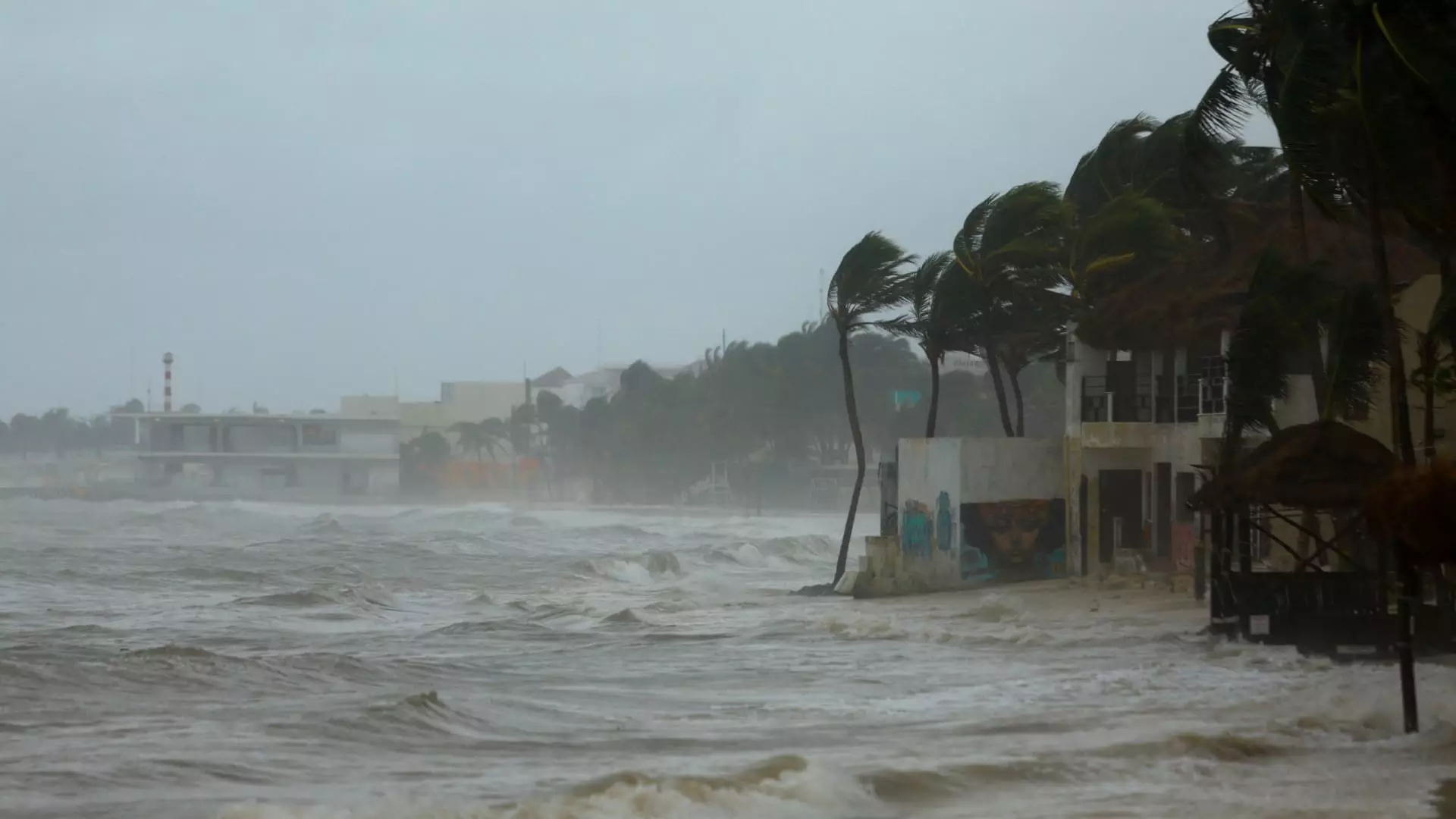As Hurricane Beryl moved into the Gulf of Mexico and took aim at the south Texas coast, officials issued disaster declarations and urged coastal residents to prepare for the impending storm. Beryl started off as a Category 2 hurricane as it hit Tulum and caused destruction in Mexico’s Yucatan Peninsula. Despite toppling trees, no injuries or deaths were reported as the storm weakened to a tropical storm while crossing the peninsula. However, the U.S. National Hurricane Center expects Beryl to regain hurricane strength in the warm waters of the Gulf and potentially hit south Texas by late Sunday or early Monday.
Beryl, known as the earliest storm to develop into a Category 5 hurricane in the Atlantic, has left a trail of devastation in its wake. The storm caused at least 11 deaths as it passed through the Caribbean islands earlier in the week. By Friday afternoon, Beryl’s center was located in the Gulf just off Mexico, approximately 615 miles southeast of Corpus Christi, Texas. With maximum sustained winds of 60 mph, Beryl was moving west-northwest at 13 mph. Forecasters predict that the storm could regain wind speeds of 90 mph before hitting Texas, making it challenging to predict its exact landfall location.
In anticipation of Hurricane Beryl’s impact, Texas officials have issued voluntary evacuation orders in low-lying areas along the coast. Residents have been urged to prepare for the storm by securing their homes and belongings. City officials in Corpus Christi have already distributed 10,000 sandbags to residents in need to prevent flooding. Lt. Gov. Dan Patrick has declared a pre-emptive disaster for 40 counties, allowing authorities to make necessary arrangements for response efforts. Oil companies have begun evacuating employees from rigs along the coast to ensure their safety.
Prior to reaching the Gulf of Mexico, Beryl wreaked havoc in Jamaica, St. Vincent and the Grenadines, and Barbados. The storm left a path of destruction, claiming lives and causing significant damage to infrastructure. Tens of thousands of people were left without power in northeastern Mexico and southern Texas. However, the head of Mexico’s civil defense agency confirmed that damages were minor, with no reported deaths or injuries in the region. As the storm made landfall in Tulum, the city experienced power outages, fallen trees, and strong winds that set off car alarms across the town.
In the aftermath of Hurricane Beryl, communities affected by the storm have begun the process of recovery and rebuilding. Officials have set up shelters in schools and hotels to provide temporary housing for displaced residents. Efforts to clear fallen trees and debris from the streets are underway, with the army helping in the cleanup process. Tourists and locals alike have taken precautions to stay safe during the storm, stocking up on essential supplies and seeking shelter in secure locations. Despite the destruction caused by Hurricane Beryl, residents remain resilient and determined to restore normalcy in their communities.
By analyzing the impacts of Hurricane Beryl on the Gulf of Mexico and the Caribbean islands, it is evident that natural disasters can have far-reaching consequences on both human lives and infrastructure. The importance of preparedness, timely response, and effective coordination between local, state, and federal authorities cannot be overstated in mitigating the impacts of such catastrophic events. As communities work together to recover and rebuild in the aftermath of Hurricane Beryl, it serves as a stark reminder of the resilience and strength of individuals in facing adversity.

Leave a Reply